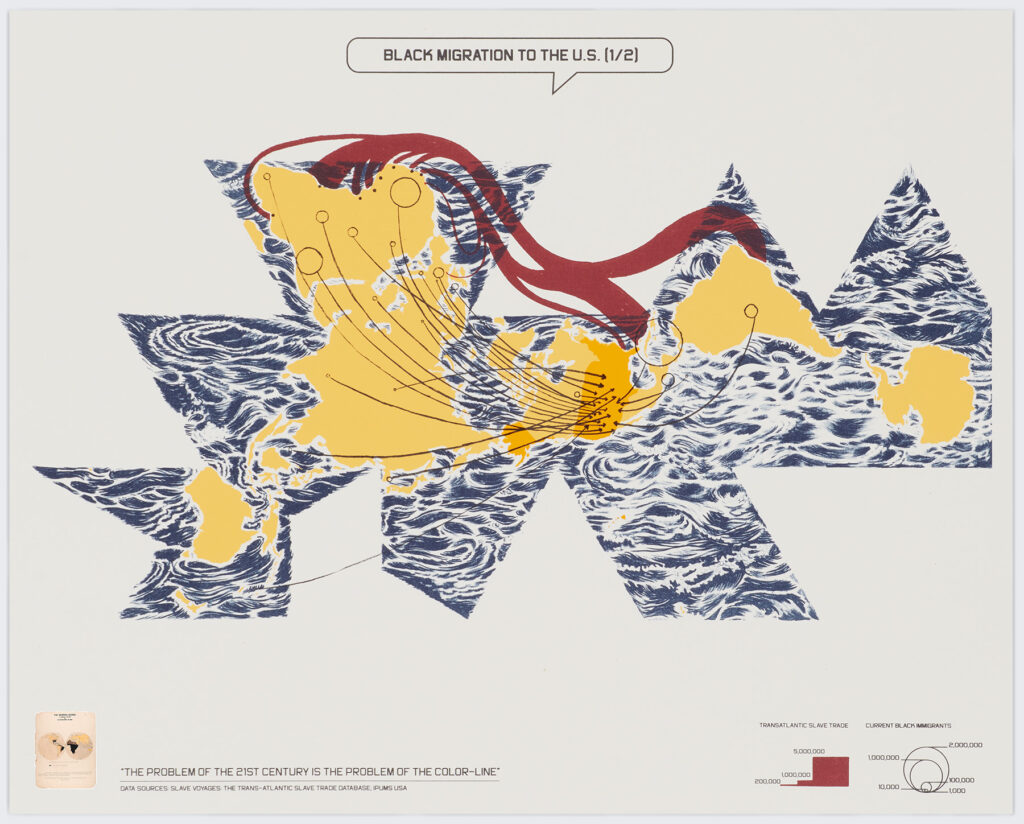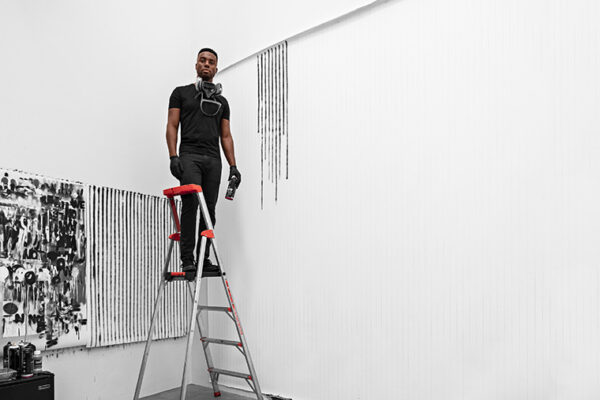
In 1896, the U.S. Supreme Court, with its decision in Plessy v. Ferguson, established the “separate but equal” doctrine and enshrined racial segregation into law. Just a few months later, sociologist W.E.B. Du Bois began a study of Black life in Philadelphia — the first in a series of groundbreaking books that would demonstrate the hollowness of the court’s reasoning.
But Du Bois’ research took other forms as well. In 1900, he and a team of students exhibited a large group of data visualizations at the Exposition Universelle in Paris. Exploring topics from public school enrollment and literacy rates to land ownership and the value of household goods, these graphics are at once deeply sourced and aesthetically striking — vibrant examples of modernist design that map the social, political and economic forces then shaping Black life.

In recent years, celebrated artist William Villalongo and data scientist Shraddha Ramani have built on this legacy with “Printing Black America: W.E.B. Du Bois’s Data Portraits in the 21st Century.” The ongoing portfolio updates and reimagines DuBois’ work with contemporary data and cutting-edge visualization practices.
This month, the Sam Fox School of Design & Visual Arts at Washington University in St. Louis will welcome Villalongo and Ramani as the 2023-24 Arthur and Sheila Prensky Island Press Visiting Artists. While on campus, the pair will conduct local research, meet with local stakeholders, work with Sam Fox School students and ultimately create a portfolio of new prints, inspired by Du Bois.
“’Printing Black America’ uses W.E.B. Du Bois’ original data portraits as a springboard for the critical possibilities found at the intersection of art and social science,” said Lisa Bulawsky, director of Island Press as well as a professor and chair of the master’s in fine arts program in visual art.
“During the fall portion of their residency, Villalongo and Ramani will create several prints, based on contemporary national data, in the Island Press printshop,” Bulawsky continued. “They also will begin collecting new data specific to St. Louis, with an emphasis on employment, income and labor. In the spring semester, they will return to Island Press and bring that research to fruition in a pair of new works.”
“This work is historically grounded, intellectually rigorous and aesthetically ambitious,” Bulawsky said. “We are thrilled to collaborate with them on it.”
In addition to the Island Press residency, Villalongo and Ramani will discuss “Printing Black America” at 5:30 p.m. Tuesday, Oct. 24, as part of the Sam Fox School’s fall Public Lecture Series. The talk is free and open to the public and takes place in Steinberg Hall.
For more information, visit samfoxschool.wustl.edu.

About the artists
William Villalongo’s figurative paintings, works on paper and sculpture are concerned with representing the Black subject against notions of race, exploring metaphors of mythology and liberation. His work is included in the permanent collections of The National Gallery of Art, the Studio Museum In Harlem, The Whitney Museum of American Art and the Princeton University Art Museum. A recipient of the Louis Comfort Tiffany Award and the Joan Mitchell Foundation Painters & Sculptor’s Grant, he lives and works in Brooklyn, N.Y., and serves as an associate professor at The Cooper Union School of Art.
Shraddha Ramani is a Brooklyn-based urbanist and researcher who uses data visualization and mapmaking as tools to make cities more resilient and equitable. She previously served as director of the GIS Data Center at New York City Emergency Management and currently works with the city’s Department of Transportation on efforts to improve equity and accessibility. Originally from Bangalore, India, her work is heavily informed by her own immigrant experience and centers on democratizing data to better equip communities to make informed decisions about their futures.


